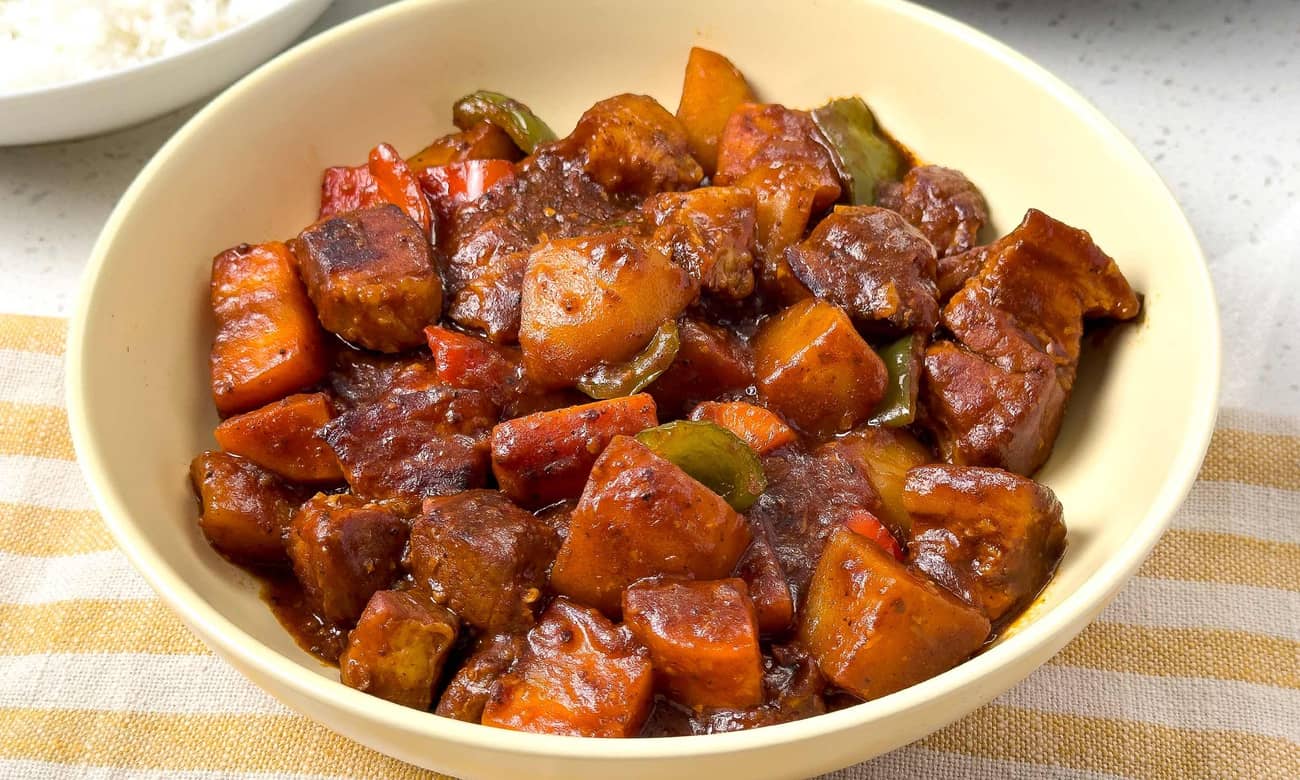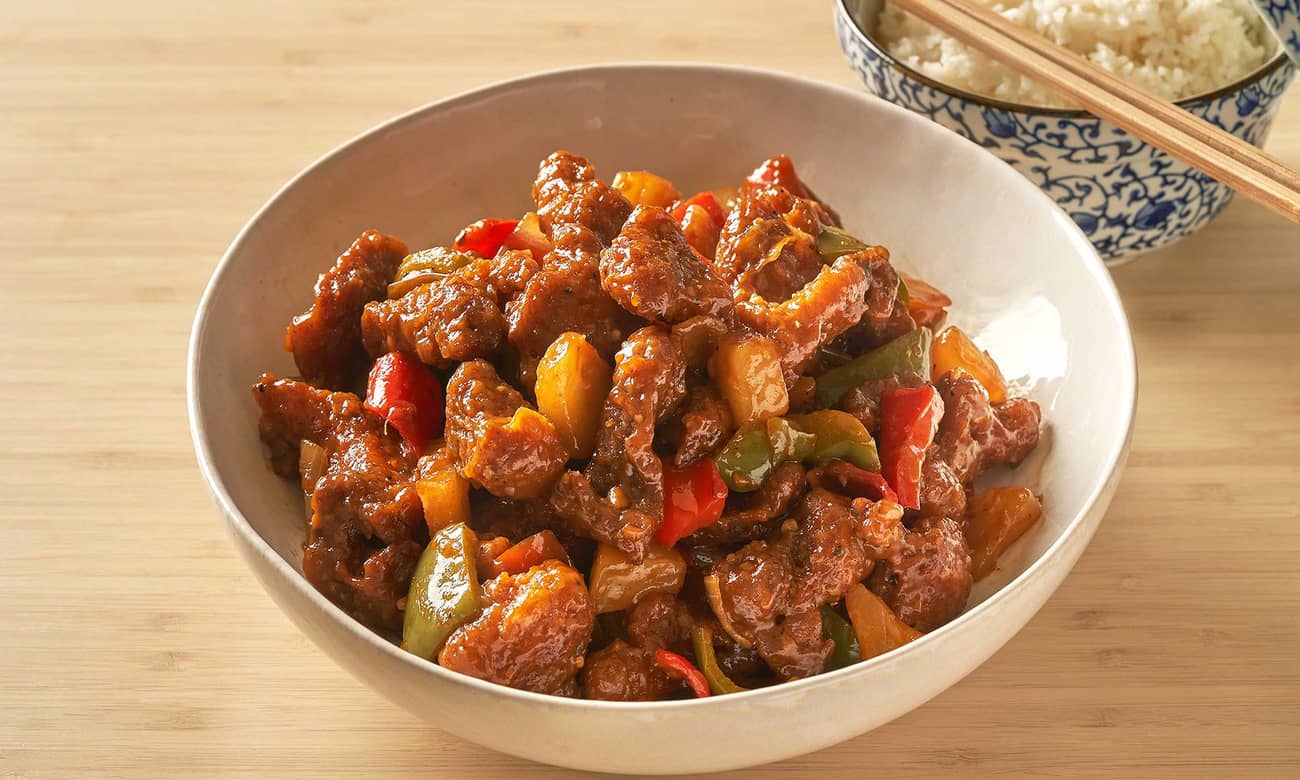
Pork humba + rum = pork rhumba. With the addition of rum, you get an added caramel depth to humba's sweet, savory sauce.
Humba is also known as hong ba or hong ma. The term hong means to braise, particularly with some caramelization involved, whether by searing the meat first for a Maillard reaction or by turning sugar into caramel over a hot flame.
Rum, made from sugarcane or molasses, imparts a complex, caramelly depth when slow-cooked into humba. The sweetness rounds out the vinegar while adding warm, aromatic undertones that matches perfectly with pork.

Humba is a dish of fatty pork stewed in vinegar, soy sauce, water, sugar, and spices—like an adobo with Chinese influences. Its name is believed to come from Chinese hong ba or hong shao rou (红烧肉), meaning “red-braised pork”; or Hokkien ho ba—"saucy pork dish". Luzon humba usually has black beans, banana blossoms, or ripe saba bananas. Visayan humba has whole peanuts and brown sugar.
Not quite, but we wouldn’t say it’s alcohol-free, either. While cooking does burn off most of the alcohol from the rum, small traces can remain in the dish.
In the case of this pork humba, the long simmer reduces the alcohol level to around 5%. If you’re cooking for someone who avoids alcohol for any reason, you can swap out the rum for pineapple juice—it's the sweetener we use in our recipe.

We don't just copy random recipes. We taste test every single one.
Easily search and save your favorites.
Chefs develop our food with techniques made easy for home cooks.

